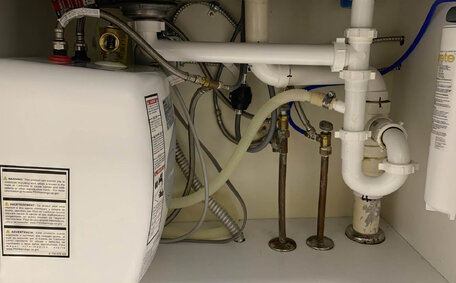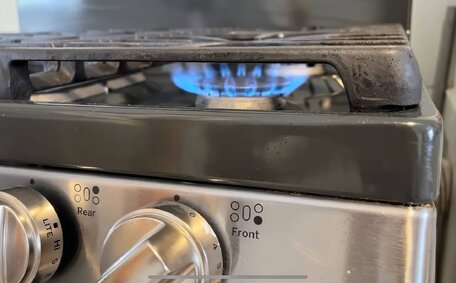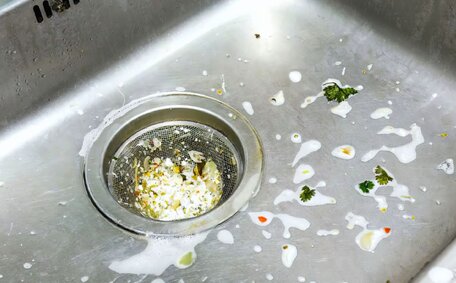Introduction to Soil Erosion and Sediment Buildup
Soil erosion and sediment buildup significantly challenge Jamisontown’s plumbing infrastructure. When heavy rains wash soil and fine sediments into stormwater drains, the narrowed passageways elevate the risk of water backups and flooding.
Unmanaged soil erosion results from exposed ground, where wind and water can easily displace soil particles. Runoff from construction sites, agricultural lands, roads, and urban areas often contains high sediment loads that pollute local waterways.
Sedimentation leads to increased turbidity and transports toxins, nutrients, and contaminants that harm aquatic ecosystems.
Proactively managing soil erosion and sediment is key to maintaining properly functioning drainage systems in Jamisontown. Addressing erosion and sedimentation helps mitigate plumbing issues, improves water quality, and protects the health of surrounding environments.
Methods such as installing silt fences and bags, cultivating native vegetation on slopes, adopting sustainable urban drainage solutions, and adhering to best practices at construction sites can significantly cut down sediment entering stormwater systems.
Understanding Sediment Pollution Sources
Sediment pollution that can impair waterways originates from both natural processes and human activities. A key natural cause is sheet, rill, and gully erosion occurring in exposed soils on embankments, farmland, forests, and grasslands. Flowing water washes away topsoil particles which become suspended sediment as runoff enters waterways.
Construction sites significantly contribute to sediment pollution when best practices are neglected. Soil disturbance and vegetation clearance intensify erosion, increasing sediment in adjacent stormwater systems due to poorly managed runoff.
Urban areas exponentially increase impermeable surfaces like roads, roofs and pavements while decreasing vegetated cover. This leads to rapid, high volume runoff with concentrated sediment loads over short timespans. Storm events readily wash accumulated urban sediment pollution directly into drainage systems.
Sediment influxes from all sources have detrimental outcomes locally in Jamisontown and across interconnected downstream environments. Toxins, nutrients and contaminants are transported by sediment-laden runoff, reducing water quality over catchments leading into sensitive ecosystems.
Rising turbidity in waterways adversely impacts aquatic life, while drainage blockages necessitate costly rectification efforts.
Common Causes of Soil Erosion
A range of natural occurrences and human activities contribute to soil erosion.
Water erosion happens when unprotected soil is hit by raindrop impact or overland flows cutting into the ground.
Common human activities leading to increased erosion rates include vegetation clearing, overgrazing, unsustainable farming techniques and poor stormwater management. The removal of stabilising plants exposes soil, high-density livestock compacts the land, and excessive ploughing along with inadequate conservation tillage degrades soil structure.
In urban settings, the proliferation of impervious surfaces prevents water absorption accelerating runoff volumes. Construction sites allowing unchecked sediment loads entering drainage contributes significant cumulative pollution over developments. Lacking or poorly implemented erosion and sediment control fails to restrain transported soil particles.
The cumulative impact of these erosion factors depletes nutrient-rich topsoil and leads to sediment blockages that compromise drainage systems. Key preventative measures include shielding exposed soil, preserving vegetation, and managing runoff to maintain land productivity and functional stormwater infrastructure.
How Urban Runoff Contributes to Sediment Buildup
Urban runoff during rain events is a major contributor to sediment pollution blocking Jamisontown drainage systems. Impervious surfaces like concrete prevent water infiltration, creating rapid overland flows washing untreated pollutants directly into stormwater drains. Drains act as convenient conduits rapidly conveying urban runoff into local creek and river ecosystems.
Chronic sediment from urban sources gradually clogs drainage pipes and pits with suspended soils, microplastics, metals, and hydrocarbons. This buildup hinders water flow and transports harmful nutrients, bacteria, and toxicants that degrade water quality.
Residents may notice unusual gurgling, persistent puddles, or sluggish drainage after rainfall, highlighting potential sediment blockages. Businesses must guard against runoff from equipment and waste areas entering stormwater systems. Nature strips with vegetation filter runoff and protect soil integrity.
The Environmental Impacts of Sediment Pollution
Sediment pollution has detrimental impacts on water quality in local waterways. Sunlight penetration reduces drastically, adversely affecting plant life.
When eroded soil particles become suspended in water as turbidity, aquatic ecosystem health declines. Waterways turn murky brown, increasing temperature and depleting dissolved oxygen levels needed by fish, platypuses, rakali and cherax destuctor crayfish inhabiting the streams.
Diminished visibility hinders visual predators such as herons and kingfishers, while sediment buries benthic organisms and habitats comprised of woody debris.
Hydrophobic organic pollutants and heavy metals often adhere to sediment, leading to pollution that can poison food chains, starting with invertebrates. Sediment also increases nutrient levels with phosphorus and nitrogen, which can fuel toxic algal blooms, particularly after rainfall.
Careful sediment control is required to prevent uncontrolled pollution from construction sites, agriculture and urban runoff entering Jamisontown stormwater drains, The broader interconnected Cooks River catchment environment leads downstream into the sensitive Sydney Botanical Gardens and busy Centennial and Sydney Parks waterways.
Minimised drainage discharge of suspended solids through improved local soil retention is needed to ameliorate sediment impacts on treasured community green spaces.
Preventing and Managing Sediment Pollution
There are several effective methods available for preventing and managing sediment pollution to maintain clear drainage systems in Jamisontown.
Silt control bags, meshes and fences should be installed and maintained at construction sites and erosion-prone areas to filter and capture transported soil particles before entering stormwater. Regularly emptied silt traps also treat heavily sediment-laden runoff. Stormwater treatment devices use settling chambers, filters and absorptive media helping further reduce discharge loads after initial barrier capture.
Construction sites must retain protective ground cover vegetation where possible while restricting vehicle movement to designated access tracks. Stockpiles should be stabilised away from drainage lines with sediment controls enclosing the perimeter.
Runoff diversion berms, channels and bunding prevents uncontrolled overland flow. Once operational, sites require thorough stabilisation reestablishing vegetation.
Sustainable urban drainage system designs incorporate multiple complementary sediment removal techniques prioritising at-source infiltration through raingardens, tree pits and permeable pavements. Grassed swales slow and filter runoff before sequential downstream treatment stages. Careful system maintenance clears trapped sediments and prevents resuspension.
Following best practises greatly assist sediment pollution management. Preventing exposure of loose erodible soil, retaining and promptly redeploying vegetation, filtering or diverting runoff away from drains, drain inlet protection, together with sustainable drainage system implementation maintains essential community infrastructure while safeguarding Jamisontown’s interlinked water environments.
Sediment Control Strategies and Best Practices
Implementing sediment control strategies and adhering to best practises is crucial for Jamisontown residents and businesses seeking to prevent drainage blockages and pollution discharge from their properties.
Native grasses, shrubs, and trees planted with foresight safeguard drainage lines from erosion.
Mature vegetation traps soil particles on fronds, branches and bark while dropped leaf litter assists topsoil accumulation. Retaining existing vegetation where possible slows and filters sediment-laden runoff while stabilising exposed soil against erosion.
Rainwater tanks intercept roof runoff, with overflows redirected to gardens, reducing reliance on drinkable water supplies. Permeable driveway materials such as porous concrete, gravel and reinforced grass are also useful alternatives decreasing impervious areas.
Commercial premises need clearly designated vehicle access tracks with stabilised surfaces to prevent soil compaction and exposed earth. Sediment fencing should enclose stockpiles and work zones. Construction site runoff requires diversion away from drains into designated treatment areas like sediment traps and erosion matting lined settlement ponds allowing particle deposition prior to discharge.
Regular sediment maintenance entails clearing debris from drain grates and sweeping areas with sediment to prevent wash-off. Dispose of street sweepings and bagged garden waste responsibly to avoid stormwater contamination, and quickly rehabilitate disturbed soil by replanting stabilising vegetation.
When to Call a Professional Plumber
Homeowners and businesses should contact a professional Jamisontown plumber when drain blockages persist despite attempted remedies, when widespread drainage issues occur on a property, or when any internal plumbing requires investigation and repair.
Jamisontown Plumbing expertly tackles sediment blockages with advanced tools like industrial augers, hydrojetters, and cameras for precise diagnosis and resolution. For severe sediment or root intrusion, pipe relining or replacement may be necessary.
Proactive contact with Jamisontown Plumbing at 1300 349 338 or via [email protected] allows for scheduling of inspections and preventative drain maintenance. Prompt clearing of detected minor sediment or roots ensures drainage systems remain fully functional.
Timely professional assistance prevents the risks associated with makeshift drain clearing that could exacerbate hidden complex internal damage and lead to costly repairs. Regular maintenance and prompt blockage resolution from Jamisontown Plumbing maintains optimal drainage, protecting infrastructure from flooding, overflows, and deterioration.
FAQs on Blocked Drains and Soil Buildup
How does soil erosion cause blocked drains?
When soil is left exposed and unprotected, heavy downpours and gusts can easily wash away critical topsoil, transporting soil particles. This runoff water can carry sediment that then flows into and accumulates in drains. Over time, a gradual buildup of soil, fine sediment and debris causes drains to become partially or fully blocked.
What are the signs that sediment has blocked my drains?
Signs your drains are blocked by sediment include gurgling noises, slow drainage, persistent ponding water, overflows, and backup from outlets. Sediment blockages may also cause bad smells, sinkholes, ground depression, and mould near drains.
Why is clearing sediment blockages important?
Clearing sediment blockages is vital for preventing floods, protecting pipes from deterioration, and avoiding overflows that could pollute waterways and harm ecosystems. Blocked drains can cause increased burdens on other drainage infrastructure, raise flood risks by reducing system capacity and require expensive repairs if left unchecked. Keeping drains clear improves functionality.
How can I prevent sediment blocking my drains?
Direct runoff into areas with gardens designed to treat and absorb it. Capture and treat runoff originating from the property to remove sediment.
Employ porous paving options and refrain from removing vegetation.
When should I call for professional drain clearing services?
Contact professional services if drain blockages persist after attempted clearing or household chemicals prove ineffective. Professionals have specialised hydrojet or auger equipment to clear stubborn blockages. Call 1300 349 338 or email [email protected] to request Jamisontown Plumbing attends your property for blocked drain assessment and maintenance.






